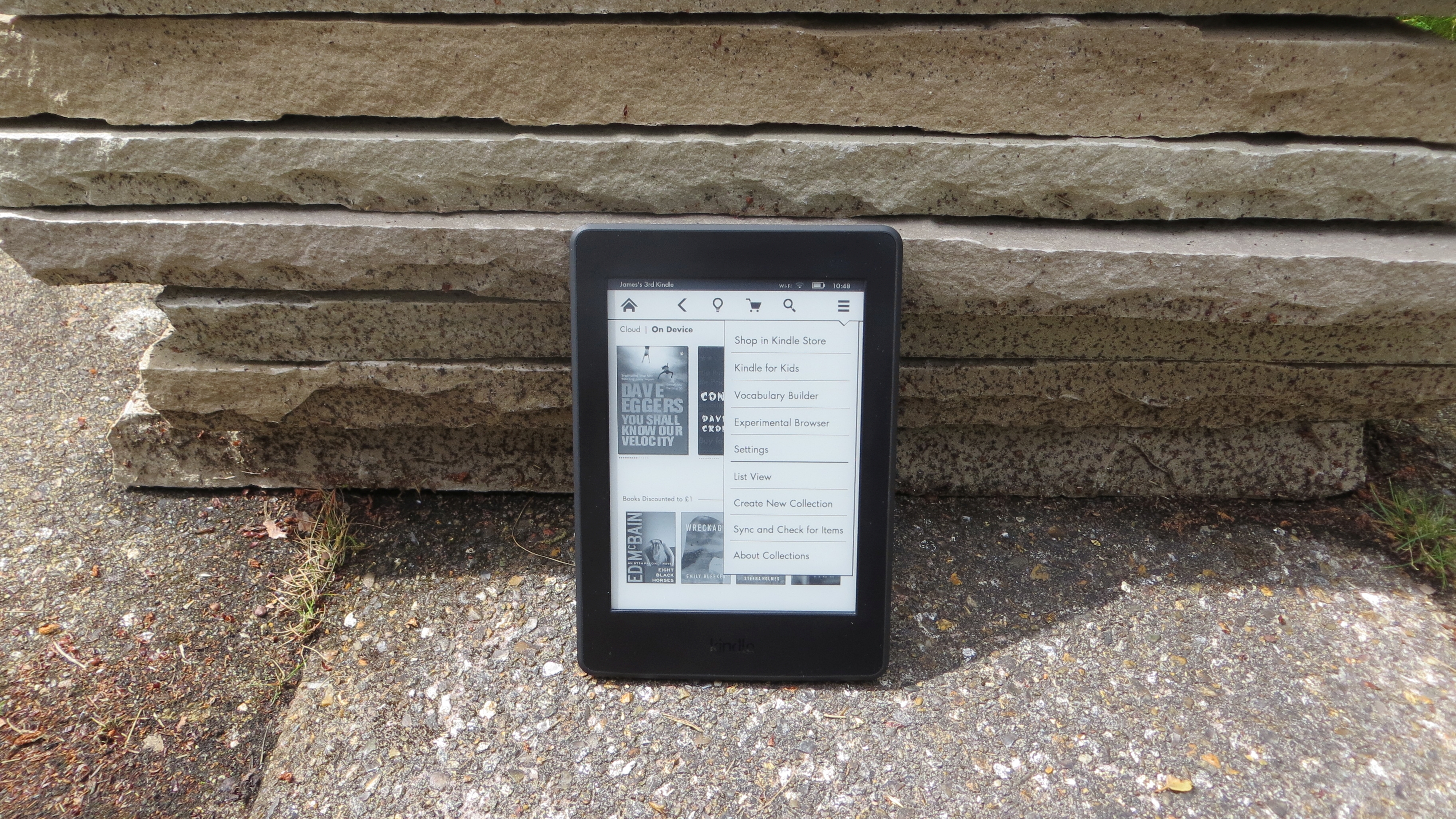Why you can trust TechRadar
I'm a big fan of the previous Kindle Paperwhite (2013), so there was never much doubt that I'd like this one, since it's essentially the same thing again, but with a better screen and some software improvements.
The real question is simply whether that's enough to justify a new model, or to tempt anyone who's resisted the Paperwhite in the past.

We liked
The new 300ppi screen is far and away the best and most vital feature of the new Kindle Paperwhite. While the previous generation display hardly seemed lacking in clarity the new one is sharper and your eyes will thank you for it, especially if you like to use small font sizes.
The new typesetting engine is a big improvement too. Along with the attractive Bookerly font it makes things that little bit more readable, though both of these things have come to other recent Kindles as a software update, so don't ditch your old model on the strength of them.
Other than that it's the same Kindle Paperwhite as ever, with the same interface and features. If you've owned a Kindle before you know what you're getting here and if not, know that no one has cracked the ereader like Amazon.

We disliked
The new Kindle Paperwhite is great, but it's not much of an upgrade over the old one. The only major change is the screen, while the remaining headline features have come as a software update to other recent Kindles.
Amazon is coming pretty close to creating a perfect ereader, so it's inevitable and not that much of a problem that many things will stay the same year after year, but it does mean the new Paperwhite is overfamiliar if you've used any recent Kindle.
And there are some things that we'd love to see change for the better. A more premium design would be nice for one. The Kindle Voyage goes somewhat in that direction but there's room to go further.
Or if not more premium then how about waterproof? The Kobo Aura H2O is, and if you like to read in the bath or by the pool, it's a good insurance policy.
As good as it is the new Kindle Paperwhite seems like a fairly conservative upgrade.

Verdict
While the new typesetting engine and Bookerly font are great additions to the Kindle Paperwhite, they've now been added to the Kindle Voyage, basic Kindle and previous generation Kindle Paperwhite too, so they're not really reasons to choose this over any other Kindle or to upgrade to this.
That leaves the improved 300ppi screen as the main upgrade and it really is a big one, making text and images sharper than ever. If you read a lot then there's every chance you'll spend more time looking at this screen than even your phone, so it's important that it's sharp and clear.
The upgrade also puts it on a par with the sharpness of the Kindle Voyage, giving buyers one reason fewer to opt for that while retaining the previous Paperwhite's starting price of £109.99 ($119, AU$190).
In short, it's the best Kindle Paperwhite yet and arguably the best value ereader on the market.
It's still lacking a few of the Kindle Voyage's extras, but it's got the core features that you need – a touchscreen, a sharp display, a built-in light and a massive library of books. It's light on new and exclusive features, but it's a device that might not need upgrading for years and yet it still comes in at a reasonable price.
If you don't already have a Kindle and aren't made of money this is the one to buy, while if you have an older model the screen improvement is just about substantial enough to warrant an upgrade. It's not exciting, but it does have the most well-rounded mix of price and features you'll find on a Kindle.
First reviewed: July 2015
James is a freelance phones, tablets and wearables writer and sub-editor at TechRadar. He has a love for everything ‘smart’, from watches to lights, and can often be found arguing with AI assistants or drowning in the latest apps. James also contributes to 3G.co.uk, 4G.co.uk and 5G.co.uk and has written for T3, Digital Camera World, Clarity Media and others, with work on the web, in print and on TV.
